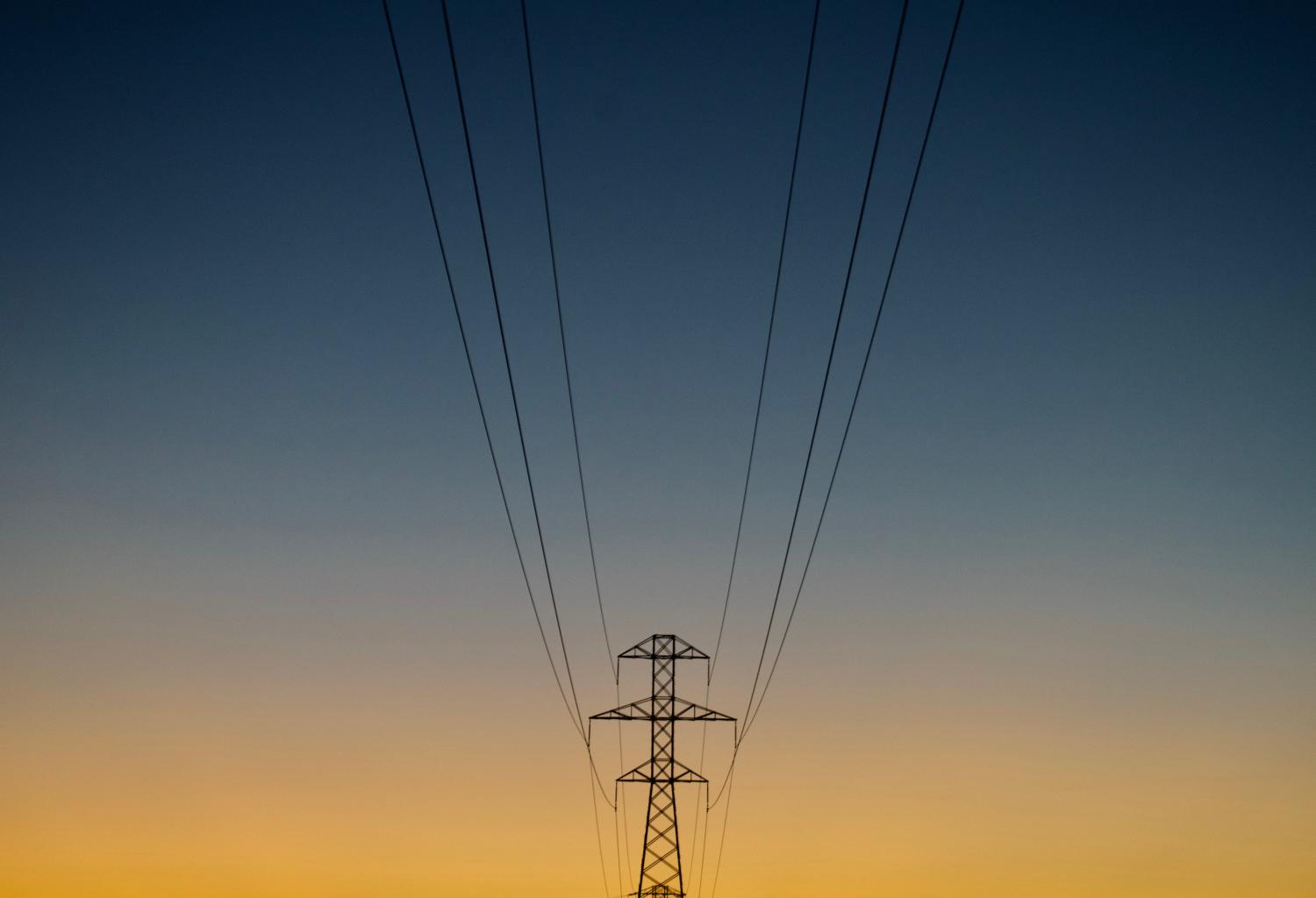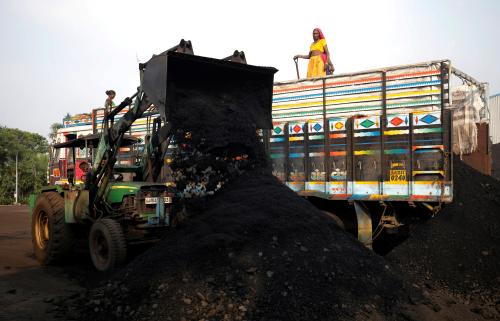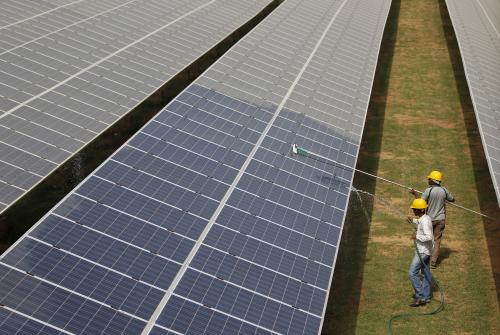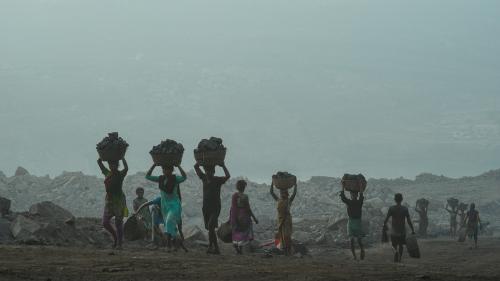Content from the Brookings Institution India Center is now archived. After seven years of an impactful partnership, as of September 11, 2020, Brookings India is now the Centre for Social and Economic Progress, an independent public policy institution based in India.
The author was a former Visiting Fellow at Brookings India. Ajai Nirula is a management consultant and mentor with over forty years of experience in the the power and fertiliser sectors and was a Visiting Fellow at Brookings India. He was also the former Chief Operating Officer at ILFS Energy Development Co. Ltd and Tata Power Delhi Distribution Ltd. Ajai has a Degree in Mechanical Engineering, a Masters in Business Management and an LLB.
By Ajai Nirula
The Indian power sector value chain can be broadly segmented into generation, transmission, and distribution sectors. At an all-India level, the total installed generation capacity was 3,56,100.19 MW as on March 31, 2019 (provisional). The peak load demand of 1,75,528 MW during FY 2018-19 was largely met, considering that the peak load supply shortfall was 1494 MW (0.8%). This indicates that power deficits on account of generation capacity shortfall, which plagued the sector till recently, have been addressed. In the next five years, the Central Electricity Authority (CEA) estimates that existing generation capacity, augmented by power projects to be commissioned during this period, will be adequate to meet the energy demand growth.
In the transmission sector, India’s regional grids (Northern, Eastern, Western, North-Eastern, and Southern) are currently integrated into one national grid. By the end of the 12th plan period (2012-2017), India had total inter-regional transmission capacity to transfer nearly 75,050 MW. This is expected to increase to about 1,18,050 MW by the end of the 13th Plan (2017-2022) and will be adequate to meet the energy flow requirements across the regions within India.
The distribution sector consists of Power Distribution Companies (Discoms) responsible for the supply and distribution of energy to the consumers (industry, commercial, agriculture, domestic etc.). This sector is the weakest link in terms of financial and operational sustainability. It is worth noting that the total outstanding dues of Discoms payable to generators/creditors as of February 2019 stood at an alarming level of Rs. 418.81 billion, as per data from 58 Discoms reported by 17 participating GENCOs (Generation Companies). This included the overdue amount of Rs. 267.56 billion > 60 days payable to the generators.
Discoms’ efficiency and power sector sustainability
Power distribution companies collect payments from consumers against their energy supplies (purchased from generators) to provide necessary cash flows to the generation and transmission sectors to operate. Due to the perennial cash collection shortfall, often due to payment delays from consumers, Discoms are unable to make timely payments for their energy purchases from the generators. This gap/shortfall is met by borrowings (debt), government subsidies, and possibly, through reduced expenditure. This increases the Discoms’ cost of borrowing (interest), which is inevitably borne by the consumer. This also undermines the ability of the Discoms to purchase and distribute power to fulfil their Universal Supply Obligation (USO) as defined in the Electricity Act 2003 or borrow for capital expenditure to meet load augmentation and growth requirements. Discoms must therefore, (a) buy cost-efficient power for consumers, (b) ensure supply reliability with quality by minimising losses/leakages (c) accurately meter, bill, and collect payments from the consumers, and (d) thereby, enable timely payments to the generators. These are key steps towards sustaining the entire energy value chain without power supply disruptions.
Since India gained independence in 1947, the central and state governments have launched a number of schemes and initiatives aimed at improving the operations and financial health of Discoms. Despite these steps, their success has been limited so far and the distribution sector continues to be a resource drain on the Indian economy. The power sector has seen multiple interventions by government – financial restructuring/ bailout (Ahluwalia Committee 2001, Central FRP Scheme 2012), operations, infrastructure, and technology improvements (APDRP 2001, R-APDRP/IPDS 2008, DDUGJY & SAUBHAGYA 2014/2017, Smart Grid Pilot project & NSGM 2012-15), and structural reform (Electricity Act 2003). UDAY (Ujwal Discom Assurance Yojana) scheme, launched in November 2015, is the latest attempt to address the severe financial stress due to accumulation of debt by the Discoms, with a focus on improving the overall efficiency and financial turnaround.
The UDAY scheme envisages the financial and performance turnaround of India’s Discoms. In all, 27 states and five Union Territories have signed up to participate. The scheme’s objectives are:
a) Financial turnaround.
b) Operational improvement.
c) Development of renewable energy.
d) Reducing the cost of generating power.
e) Energy efficiency and conservation with the ultimate objective of availability of 24×7 power for all at an affordable price.
As the data on distribution sector financials and operations shows, the power sector today faces the critical challenge of avoiding a financial crisis. In all likelihood, another scheme to address the shortfall of UDAY’s targets, is on the horizon. The objective of this paper is to critically analyse the performance of Discoms in the context of UDAY, launched by the Government of India almost four years ago, for the operational and financial turnaround of the Discoms.
This paper also aims to offer an analysis of Discoms’ performance, and establish the key areas of focus going forward, with strategies proposed for each focus area.




